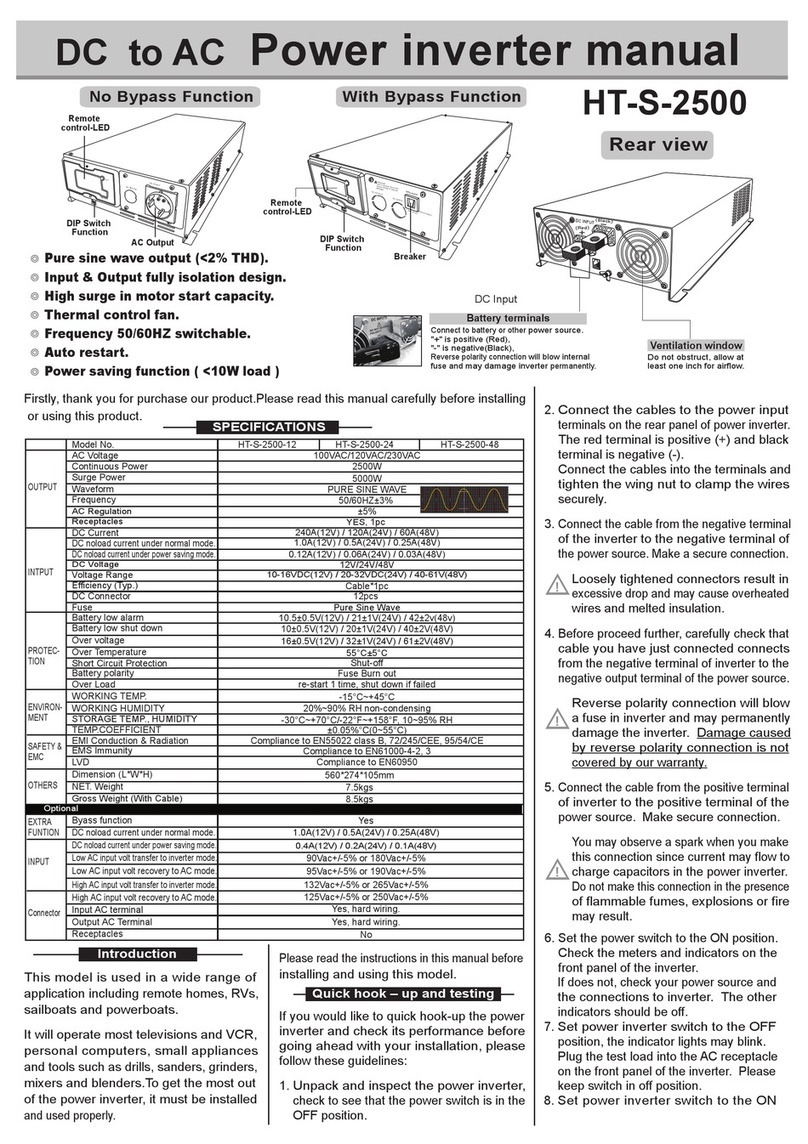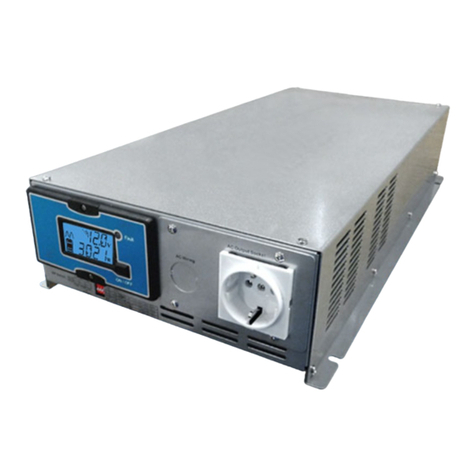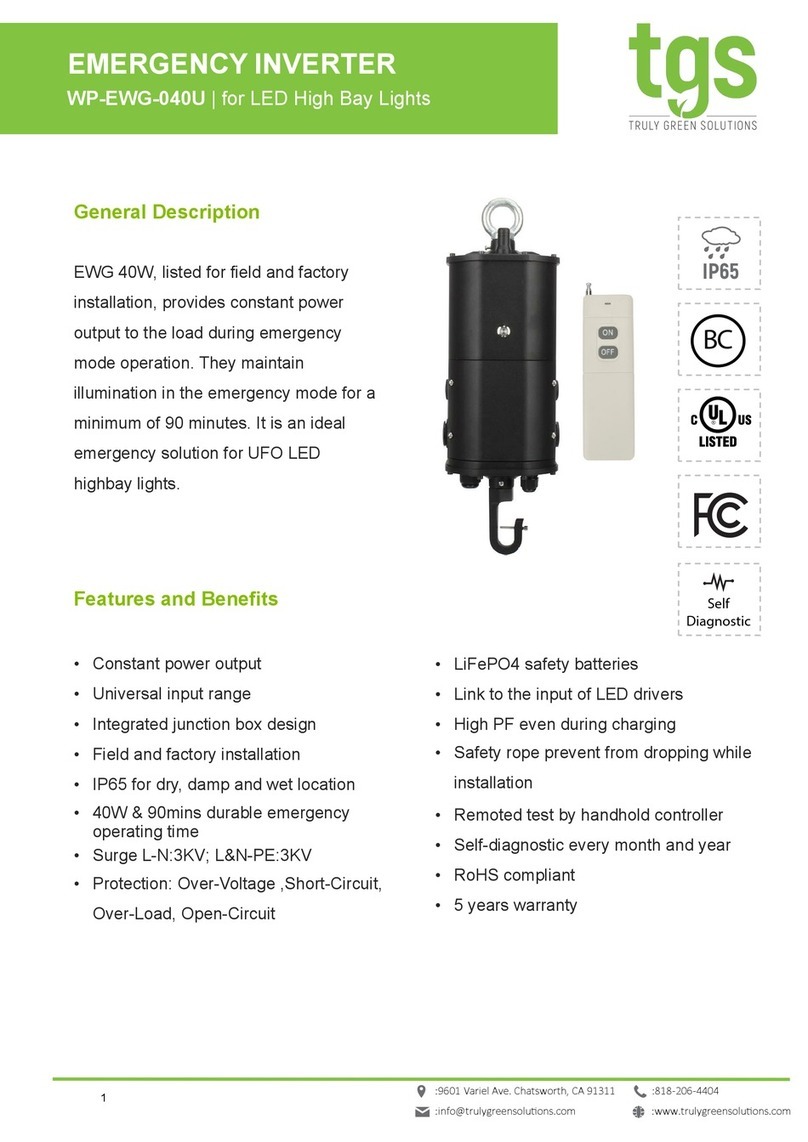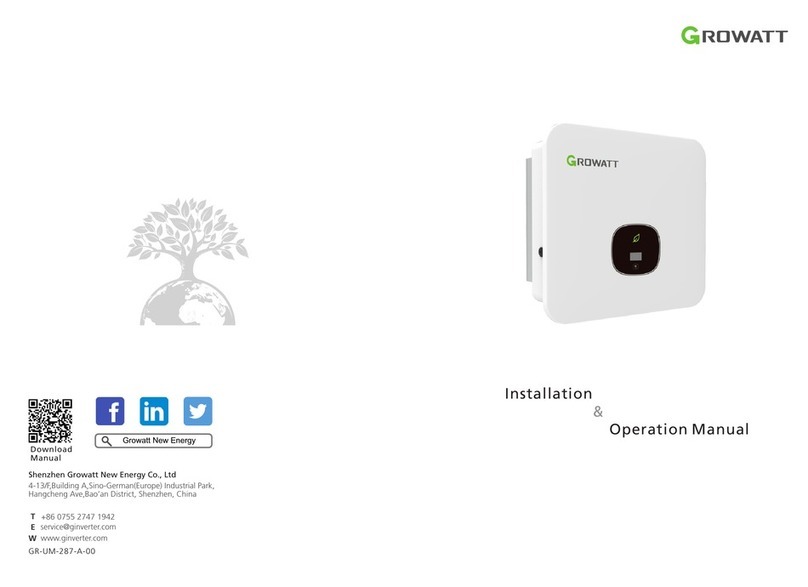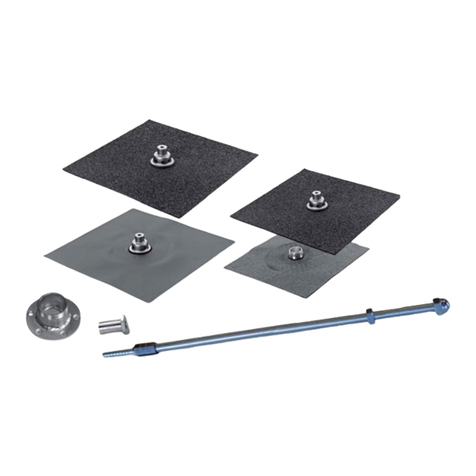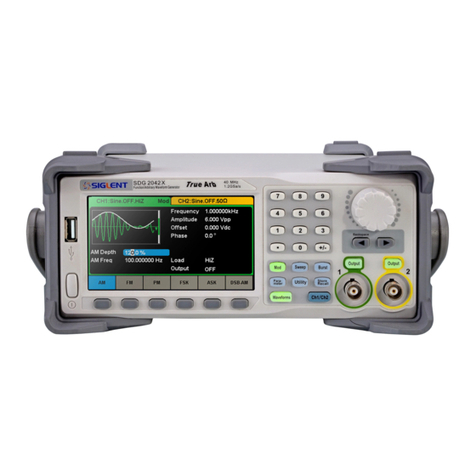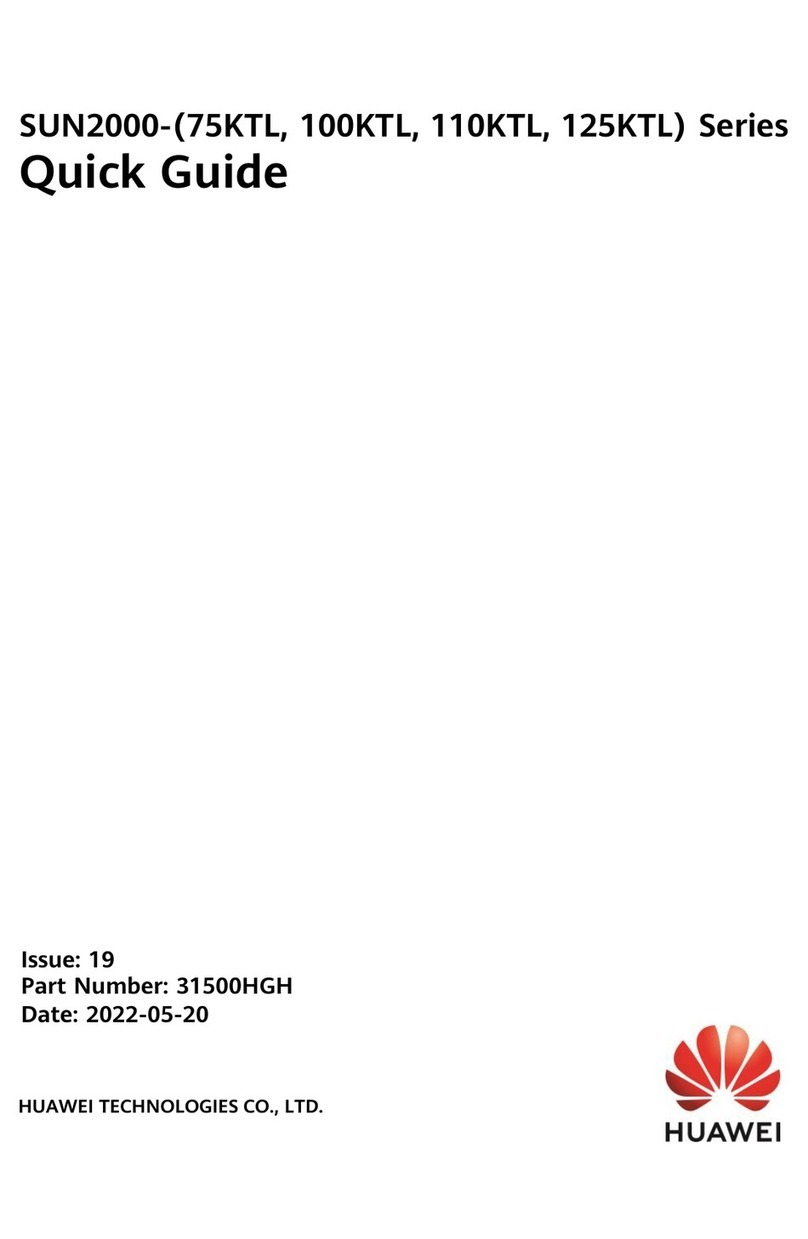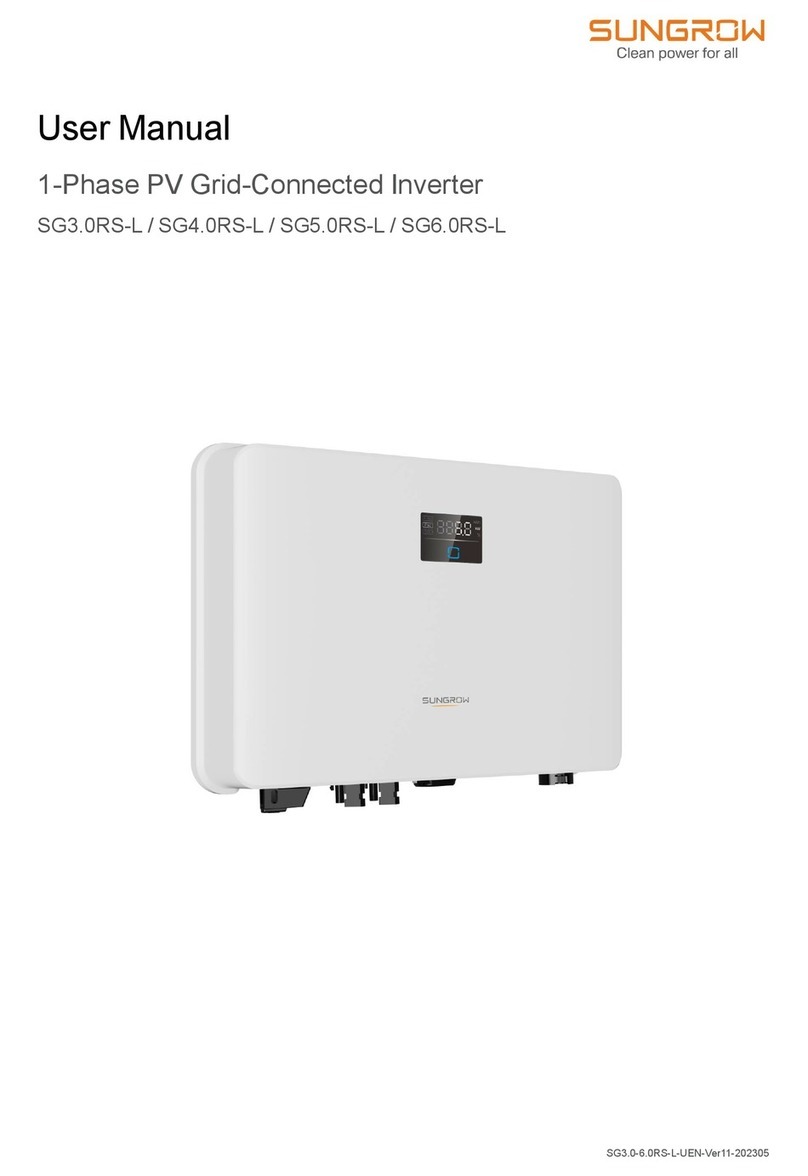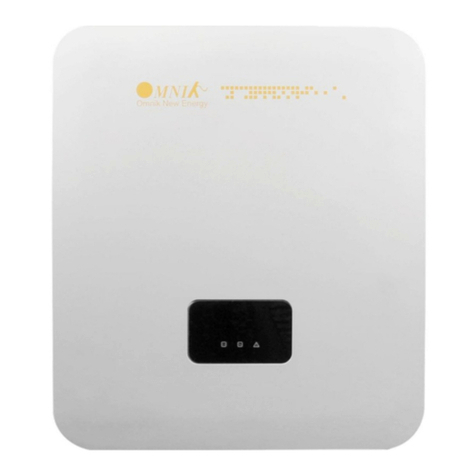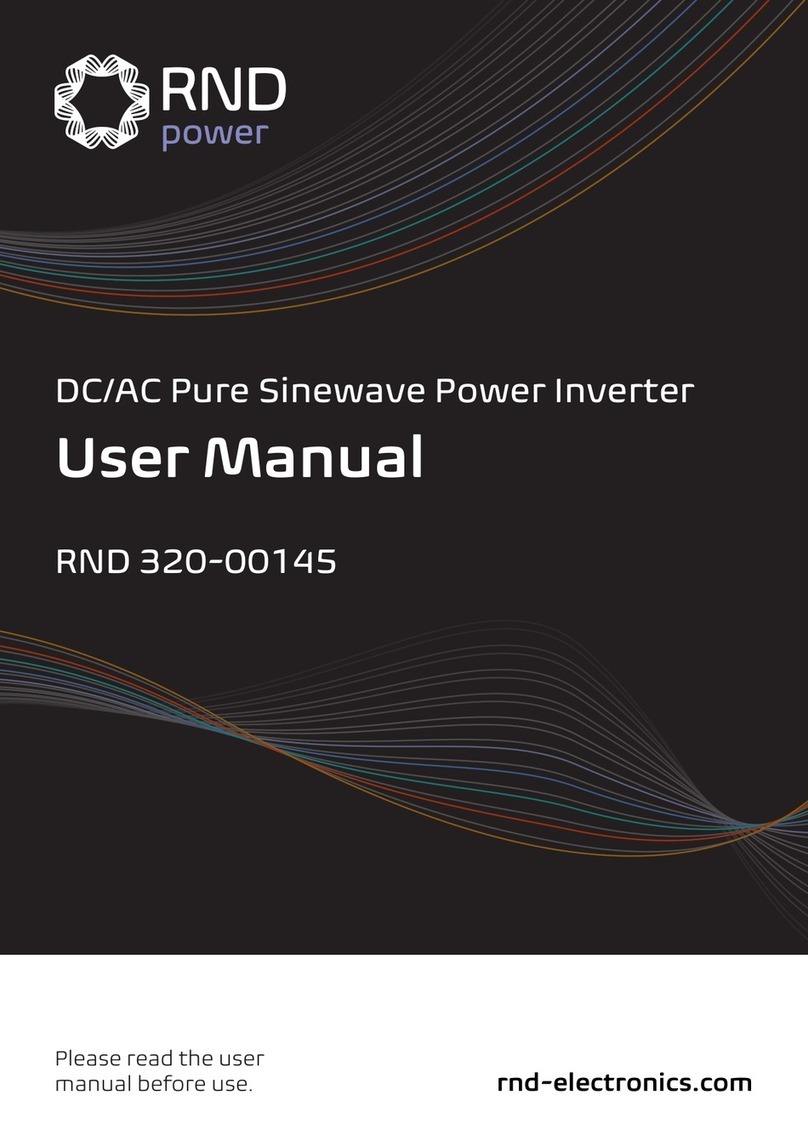Cru Power E-1000 User manual

Firstly, thank you for purchase
our product.
Please read this manual carefully before
installing or using this product.
Output Frequency
Over Temperature
protection
Dimensions
(L×W×H)(by mm)
Output power
continuous
AC Output Voltage
Regulation
Input low voltage
shut-down
Efficiency
Overload protection
Net weight (by Kg/s)
No load current draw
1000W
±5﹪
Input low voltage
alarm
DC10.5V
±
0.5V
DC10V
±
0.5V
DC21.5V
±
1V
DC20V
±
1V
Input high voltage
shut-down
DC15V
±
0.5V DC30V
±
1V
50Hz/60Hz ±2Hz
YES
Output reverse
protection YES
Cooling fan YES
55℃±5℃
340*179*82
3.20
>85﹪
AC100V / AC110V
AC120V / AC220V
AC230V / AC240V
SPECIFICATIONS
Model No.
Output wave
Modified Sine Wave
Firstly, thank you for purchase our
product.
Please read this manual carefully
before installing or using this
product.
Introduction
Specification
The power inverter series are the member
of the most advanced line of mobile AC
power systems available.
This model is used in a wide range of
application including remote homes, RVs,
sailboats and powerboats. It will operate
most televisions and VTR's, personal
computers, small appliances and tools such
as drills, sanders, grinders, mixers and
blenders.
To get the most out of the power inverter,
it must be installed and used properly.
Please read the instructions in this manual
before installing and using this model.
Name and Main function
c. Overload protection:
Orange LED lights when inverter shut down
due to overloading. Interver would re-start
twice, if failed, inverter would shut down. Please
turn inverter OFF, reduce load and turn inverter
ON to reset.
d.LED display of Romote Control:
Display battery voltage and current. Current
should be in the green zone for continuous
operation. The inverter will operate for
several minutes when the current in the yellow
zone.
e. AC outlet:
Outlet sockets available:Australia/NZ
North America
Europe
Universal
Japan
2. Rear view:
a.Ventilation window:
Do not obstruct, allow at least one inch for
airflow.
b. Battery terminals:
Connect to 12V/24V battery or other 12V/24V
power source. "+" is positive, "-" is negative.
Reverse polarity connection will blow internal
fuse and may damage inverter permanently.
c. Chassis ground lug:
Connect to earth ground or to vehicle chassis
using #8 AWG wire.
WARNING!!
Operation of the inverter without a proper
ground connection may result in an electrical
safety hazard.
!
Quick hook - up and testing
If you would like to quick hook-up the power
inverter and check its performance before
going ahead with your installation, please
follow these guideline
1. Unpack and inspect the power inverter,
check to see that the power switch in the
OFF position.
2. Connect the cables to the power input
terminals on the rear panel of power
inverter. The red terminal is positive (+)
and black terminal is negative (-).
Connect the cables into the terminals and
tighten the wing nut to clamp the wires
securely.
!
!
CAUTION!!
Reverse polarity connection will blow a fuse in
inverter and may permanently damage the
inverter. Damage caused by reverse polarity
connection is not covered by our warranty.
5.
Connect the cable from the positive terminal
of inverter to the positive terminal of the power
source. Make secure connection.
WARNING!!
You may observe a spark when you make this
connection since current may flow to charge
capacitors in the power inverter.
Do not make this connection in the presence of
flammable fumes, explosions or fire may result.
6.
Set power inverter switch to the OFF
position, the indicator lights may blink and
the internal alarm may sound momentarily.
This is normal. Plug the test load into the
AC receptacle on the front panel of the inverter.
Leave the test load switch off.
7.
Set power inverter switch to the ON position
and turn the test load on, the inverter should
supply power to the load.
!
3.
Connect the cable from the negative terminal
of the inverter to the negative terminal of the
power source. Make a secure connection.
CAUTION!!
Loosely tightened connectors result in excessive
drop and may cause overheated wires and
melted insulation.
4.
Before proceed further, carefully check if the
terminals connect correctly.
1. Front view
a. ON/OFF switch:
Leave in the OFF position during installation.
b.Over heat protection:
LED sparkles when product temperature gets
high, it wou'd shut down automatically while
temperature arrives 55±5℃.
Installation
1.Where to install
The power inverter should be installed in a
location that meets the following requirements:
a. Dry - Do not allow water to drip or splash on
the inverter.
b. Cool - Ambient air temperature should be
between 0°C and 40°C, the cooler environment
is better.
c. Ventilated - Allow at least one inch of
clearance around the inverter for airflow.
Ensure the ventilation openings on the rear
and bottom of the unit are not obstructed.
d. Safe - Do not install the inverter in the same
compartment as batteries or in any
compartment capable of storing flammable
liquids such as gasoline.
2. Cables
DC to AC inverters requires high amperage/low
voltage DC power to low amperage/high voltage
AC power. To operate properly connect inverter
DC input terminals direct to battery with heaviest
wire available see chart below:
Max Watts Out Approx. Amps
100W
150W
300W
600W
1000W
1200W
1500W
1800W
2500W
10A
15A
30A
60A
100A
120A
150A
180A
250A
#16
#16
#12
#6 or 2 X #10
# 4
# 4
# 4
2 X #4
2 X #4
Teq'dWire Gauge
3. Grounding
The power inverter has a lug on the rear panel
"chassis ground". This is to connect the chassis
of the power inverter to the ground. The ground
terminals in the AC outlets on the front panel of
the inverter are also connected to the ground lug.
The chassis ground lug must be connected to a
grounding point, which will vary depending on
where the power inverter is installed. In a vehicle,
connect the chassis ground to the chassis of the
vehicle. In a boat, connect to the boat's grounding
systems. In a fixed location, connect the chassis
ground lug to earth.
DC to AC Power inverter
manual
HT-E-152A2
AC100V~AC120V<0.6 A
AC220V~AC240V<1.0 A
HT-E-1000-12 HT-E-1000-24
Remote Control
Remote Control
Overload LED
Power LED
Input Volt and
load status indicator
It is suitable for Australia,
New Zealand, Canada,
America, Europe, Japan
and Universal type.
AC Outlet sockets
SWITCH
ON/OFF switch
Please keep switch
in the OFF position
during installation.
E-1000
INPUT LOAD(100%)
ON
POWER
OFF
OVER
TEMP
INPUT LOAD(%)
OVER
LOAD
(24V) (12V)
VOLT WATT
30
28
26
24
22
20
15
14
13
12
11
10
1100
1000
900
800
700
600
500
400
300
200
Overtemp LED
Front view

Operation
To operate the power inverter, turn it on using the
ON/OFF switch on the front panel. The power
inverter is now ready to deliver AC power to your
loads. If you are operating several loads from the
power inverter, turn them on separately after the
inverter has been turned on. This will ensure that
the power inverter does not have to deliver the
starting currents for all the loads at once.
!
!
The neutral (common) conductor of the power
inverter AC output circuit is connected to the
chassis ground. Therefore, when the chassis is
connected to ground, the neutral conductor will
also be grounded. This conforms to national
electrical code requirements that separately
derived AC sources (such as inverters and
generators) have their neutral tied to ground in
the same way that the neutral conductor from the
utility line is tied to ground at AC breaker panel.
Caution!
The negative DC input of the power inverter is
connected to the chassis. Do not install the
power inverter in a positive ground DC system.
A positive ground DC system has the positive
terminal of the battery connected to the chassis
of the vehicle or to the grounding point.
Warning!
Do not operate the power inverter without
connecting it to ground. Electrical shock hazard
may result.
Remote Control:
The ON/OFF switch turns the control circuit in the
power inverter on and off.
When the switch is in the OFF position, the power
inverter draws no current from battery. When the
switch is in the ON position but with no load, the
power inverter draws less than 600mA
(12V version) or 300 mA (24V version) from
battery.
1. Battery voltage indicator
The battery voltage graph indicates the voltage
at the input terminals of the power inverter. At low
input current, this voltage is very close to the
battery voltage. At high input current, this voltage
will be lower than the battery voltage because of
the voltage drop across the cable and connections.
Ideally, the voltage should remain in the green
area of the bar graph. If the voltage goes into the
red area at top and bottom of the graph, inverter
may shutdown.
2. Load percentage indicator
The load watts grap indicates the watts of the
appliances you use.
If the load goes into the red area at top, inverter
may shut down.
3. Overtemp indicator
The overtemp indicator indicates that the power
inverter has shut itself down because it is
overheated. The power inverter may overheat
because it has been operated at power levels
above its rating, or because it has been installed
in a location which does not allow it to dissipate
heat properly.
Please turn on the inverter again when it cools
down.
4. Overload indicator
The overload indicator indicates that the power
inverter has shut itself down because its output
circuit has been short circuited or drastically
overloaded.
Turn off the inverter, correct the fault condition
or reduce load, then turn on the inverter and try
again.
1.Input voltage
The power inverter will operate from input voltage
ranging 10V-15V (12V ver.) or 20V - 30V (24V ver.).
If the voltage drops below 10.5V (12V ver.) or
21.0V (24V ver.), an audible low battery warning
will sound and the voltage indicator will be in the
lower red zone.
Troubleshooting
1.Common problems
a. Buzz in audio systems:
Some inexpensive stereo systems and "boom
boxes" will emit a buzzing noise from their
loudspeakers when operated from the power
inverter. This is because the power supply in
the device does not adequately filter the modified
sine wave produced by the power inverter.
The only solution is to use a sound system that
incorporates a higher quality power supply.
b. Television interference:
Operation of the power inverter can interfere with
television reception on some channels. If this
situation occurs, the following steps may help to
alleviate the problem.
-Make sure that the chassis ground lug on the
back of the power inverter is solidly connected
to the ground system of your vehicle, boat or home.
-Do not operate high power loads with the power
inverter while watching television.
-Make sure that the antenna feeding your
television provides an adequate ("snow free")
signal and that you are using good quality cable
between the antenna and the television.
-Move the television as far away from the power
inverter as possible.
-Keep the cables between the battery and the
power inverter as short as possible and twist them
together with about 2 to 3 twists per foot. This
minimizes radiated interference from the cables.
2.Troubleshooting guide
Operating limits Warranty
We offer 12 monts warranty from the date of
purchase and will repair or replace any defective
power Inverter, this limited warranty is void if the
unit is abused, modified, installed improperly, if the
housing has been removed, if the serial number is
missing, or if the original identification markings
have been defaced, altered, or removed. The
supplier is not liable for any incidental,
consequential or other damages arising from the
use, cost of removal, installation, or troubleshooting
of thw customer's electrical systems.
Problem possible cause solution
No Output voltage
1.Make sure that inverter
cable connects to battery
well
2.Internal fuse blown out
1.Re-set the cable
2.Change new fuse
No voltage indicator
Reduce load
Inverter shuts down
and overload light
shows
Overload
Charge battery
Battery volt is lowLow battery alarm
Improve ventilation
reduce inverter
temperature
or let it cool down
naturally
Inverter shuts down
and overtemp light
shows
Overtemperature
The power inverter will shut down
if the input voltage drops below 10V (12V ver.) or
20V (24V ver.). This protects your battery from
being over discharged.
The power inverter will also shut down if the input
voltages exceed 15V (12V ver.) or 30V (24V ver.).
This protects the inverter against excessive input
voltage indicator will be in the upper red zone.
Although the power inverter incorporates protection
against over voltage, it may still be damaged if the
input voltage is allowed to exceed 20V (12V ver.)
or 40V (24V ver.).
※The error of above spec is ±0.5V
This is only warranty and the company makes
no other warranties, express or implied, including
warranties of merchantability and fitness for a
particular purpose.
Repair or replacement are your sole remedies
and shall not be liable for damages, whether
direct, incidental, special or consequential, even
though cause by negligence or other fault.
Maintenance
Very little maintenance is required to keep your
inverter operating properly. You should clean
the exterior of the unit periodically to prevent
accumulation of dust and dirt. At the same time,
tighten the screws on the DC input terminals.
Ventilation
window
Red
Black
Battery terminals
Rear view
Connect to battery or
other power source.
"+" is positive(Red),
"
-
" is negative(Black).
Reverse polarity connection
will blow internal fuse and
may damage inverter
permanently.
Other Cru Power Inverter manuals
Popular Inverter manuals by other brands
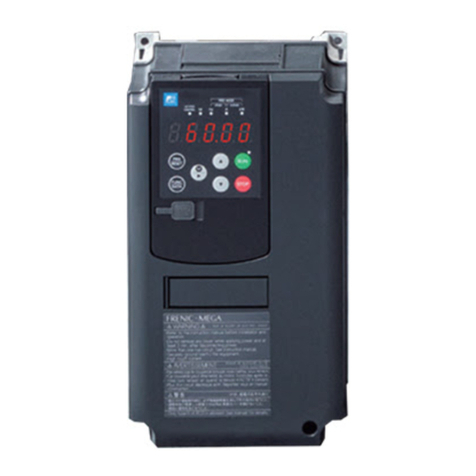
Fuji Electric
Fuji Electric FRENIC MEGA G2 Series user manual
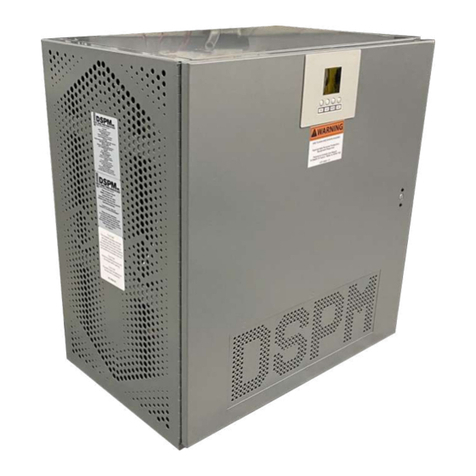
DSPM
DSPM Defender Mini manual

Lenze
Lenze i550 Series Mounting and switch-on instructions

Hitachi
Hitachi air core 600 Installation & maintenance manual
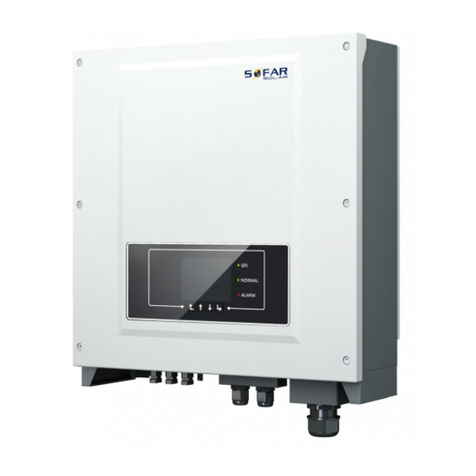
Sofar solar
Sofar solar 10K-15KTL-G2 user manual

Delta
Delta M70A-260 Installation and operation manual
